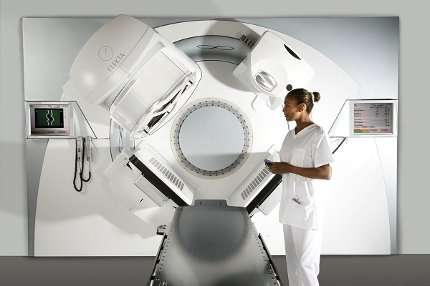New radiation technology raises a stir

Nothing less than a breakthrough. That's how researchers at UMC Utrecht see their MRI device with built-in irradiation. With this device, doctors can irradiate the tumour more accurately, because they can map the tumour tissue live on the MRI scans. After a development period of twenty years, the first cancer patients successfully finished a complete radiation programme.
Being able to see what you're doing while irradiating a tumour. It sounds very logical, but for a long time it was considered technically impossible. Researchers from the University Medical Center Utrecht however did believe in it. Together with Philips Medical Systems and Elekta they worked on an MRI scanner in which the irradiator is incorporated. This way you can irradiate the cancer cells much more accurately and leave the healthy tissue intact. This creates less damage to the healthy tissue in the vicinity of the tumour, which is now inevitably also irradiated. An additional advantage is that the patient has to undergo fewer radiation treatments.
The development of the technology has lasted twenty years, and now the first cancer patients have gone through a complete radiation trajectory. Various national media reported on this breakthrough, including the Algemeen Dagblad and De Telegraaf. There is also a great interest in the technology worldwide. In the United Kingdom and the United States, among others, there are several hospitals that are looking forward to working with the technology.
Research
An important part of the development of the combi-technique was a research project that was funded by Technology Foundation STW, now NWO Domain Applied and Engineering Sciences (AES). The project, called A hybrid MRI radiotherapy system, started in 2007. Researchers worked together with Philips and Elekta, who develop MRI systems and radiation equipment.
One of the UMC researchers who developed the radiation system was Bas Raaijmakers. He received a Veni grant in 2003 to be able to work on the integration of radiation equipment and an MRI system. The Veni project was supervised by Technology Foundation STW.
After these successful projects success the development of the combi-technique continues. This is realised in various projects, including two AES projects that have been granted within the HTSM programme. Both AES projects should lead to more knowledge and dexterity in following the movements organs make during the irradiation. This should make it possible to irradiate even more accurately. Partly thanks to this kind of projects, the technology can reach full maturity.


















